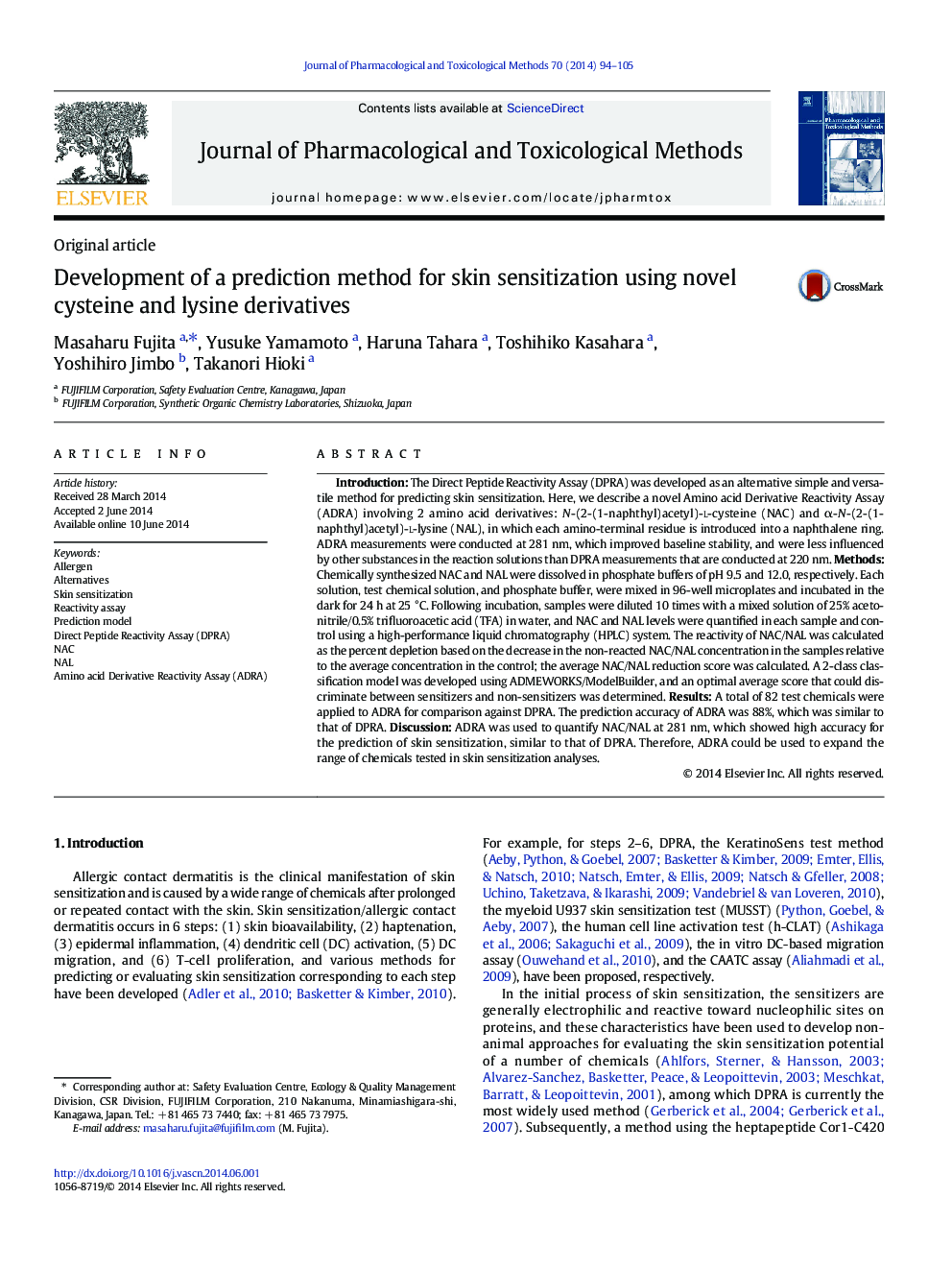| کد مقاله | کد نشریه | سال انتشار | مقاله انگلیسی | نسخه تمام متن |
|---|---|---|---|---|
| 2549074 | 1124496 | 2014 | 12 صفحه PDF | دانلود رایگان |
IntroductionThe Direct Peptide Reactivity Assay (DPRA) was developed as an alternative simple and versatile method for predicting skin sensitization. Here, we describe a novel Amino acid Derivative Reactivity Assay (ADRA) involving 2 amino acid derivatives: N-(2-(1-naphthyl)acetyl)-l-cysteine (NAC) and α-N-(2-(1-naphthyl)acetyl)-l-lysine (NAL), in which each amino-terminal residue is introduced into a naphthalene ring. ADRA measurements were conducted at 281 nm, which improved baseline stability, and were less influenced by other substances in the reaction solutions than DPRA measurements that are conducted at 220 nm.Methods:Chemically synthesized NAC and NAL were dissolved in phosphate buffers of pH 9.5 and 12.0, respectively. Each solution, test chemical solution, and phosphate buffer, were mixed in 96-well microplates and incubated in the dark for 24 h at 25 °C. Following incubation, samples were diluted 10 times with a mixed solution of 25% acetonitrile/0.5% trifluoroacetic acid (TFA) in water, and NAC and NAL levels were quantified in each sample and control using a high-performance liquid chromatography (HPLC) system. The reactivity of NAC/NAL was calculated as the percent depletion based on the decrease in the non-reacted NAC/NAL concentration in the samples relative to the average concentration in the control; the average NAC/NAL reduction score was calculated. A 2-class classification model was developed using ADMEWORKS/ModelBuilder, and an optimal average score that could discriminate between sensitizers and non-sensitizers was determined.Results:A total of 82 test chemicals were applied to ADRA for comparison against DPRA. The prediction accuracy of ADRA was 88%, which was similar to that of DPRA.Discussion:ADRA was used to quantify NAC/NAL at 281 nm, which showed high accuracy for the prediction of skin sensitization, similar to that of DPRA. Therefore, ADRA could be used to expand the range of chemicals tested in skin sensitization analyses.
Journal: Journal of Pharmacological and Toxicological Methods - Volume 70, Issue 1, July–August 2014, Pages 94–105
